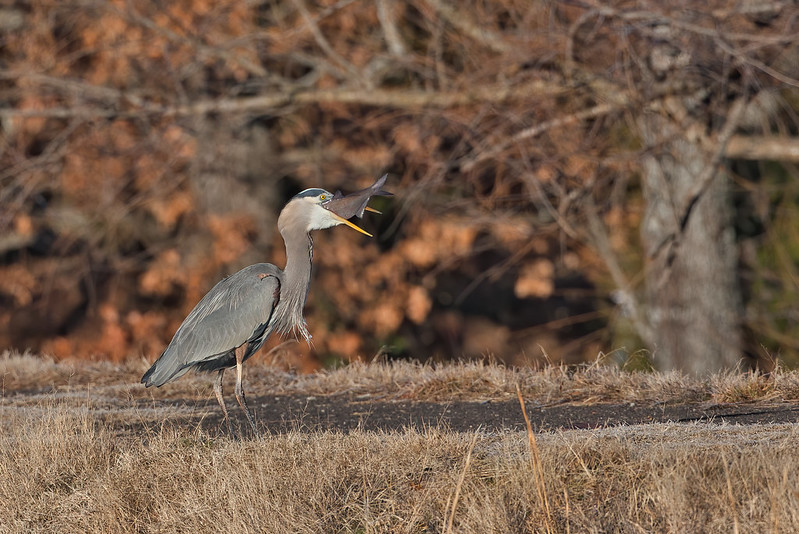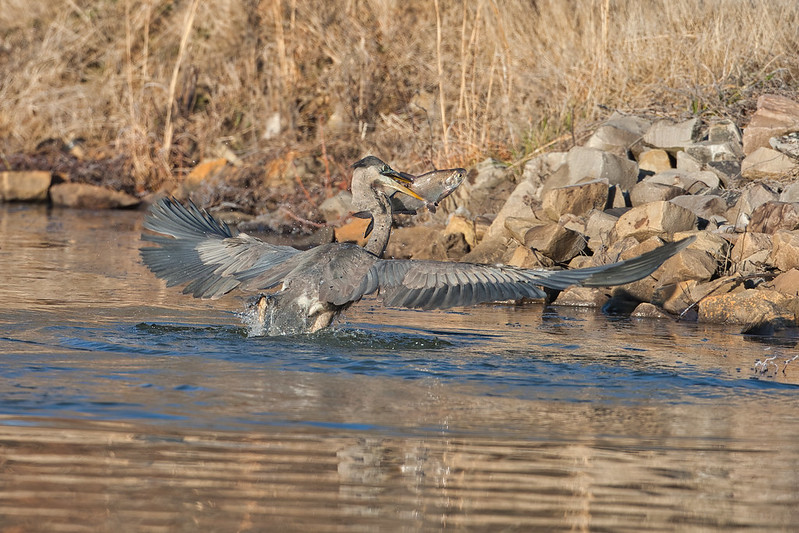These photos show a Great Blue Heron hauling a large fish to shore—a moment that stood out for the size of the fish and the heron’s persistence in managing its prey. The fish appears to be a Freshwater Drum, identified by its distinctive rounded shape and fin structure. This species is a common target for Great Blue Herons in freshwater habitats. Once on shore, the heron skillfully swallowed the fish, as shown in the second photo.


Observation Setup
The photos were taken from the parking lot on a clear winter morning. The calm conditions and soft light provided excellent visibility, making it an ideal time for wildlife photography. My camera and lens were stabilized on a bean bag draped over the open window of my pickup. This setup minimized vibrations and provided a steady platform for capturing sharp images, particularly useful for documenting a dynamic scene like this. The simplicity of using a bean bag instead of a tripod also allowed for quicker adjustments as the heron moved along the shore.
Gear Used:
- Camera: Canon EOS 1D Mark III
- Lens: Canon EF 500 mm f/4L IS
Technical:
- Location: City Lake, Charleston (Arkansas)
- Date & Time Taken: December 31, 2013 (09:39 A.M.)
- Aperture: f6.3 and 7.1
- Shutter speed: 1/1600 sec. and 1/2500 (as determined by the camera)
- ISO: 640
- Exposure Compensation: 0
- Focal Length: 500 mm
The heron’s patience in stalking and hauling the fish to shore, followed by the precision in positioning and swallowing it whole, was remarkable. Its ability to adjust its grip and balance the fish as it maneuvered closer to land demonstrated a level of skill honed by instinct and experience. Moments like this capture the essence of wildlife photography and highlight the incredible behaviors of these birds. Observing such interactions in their natural habitat serves as a reminder of the complexity and beauty of the animal kingdom. Each frame of this sequence tells part of the story, leaving a lasting impression of the heron’s determination and ingenuity.
